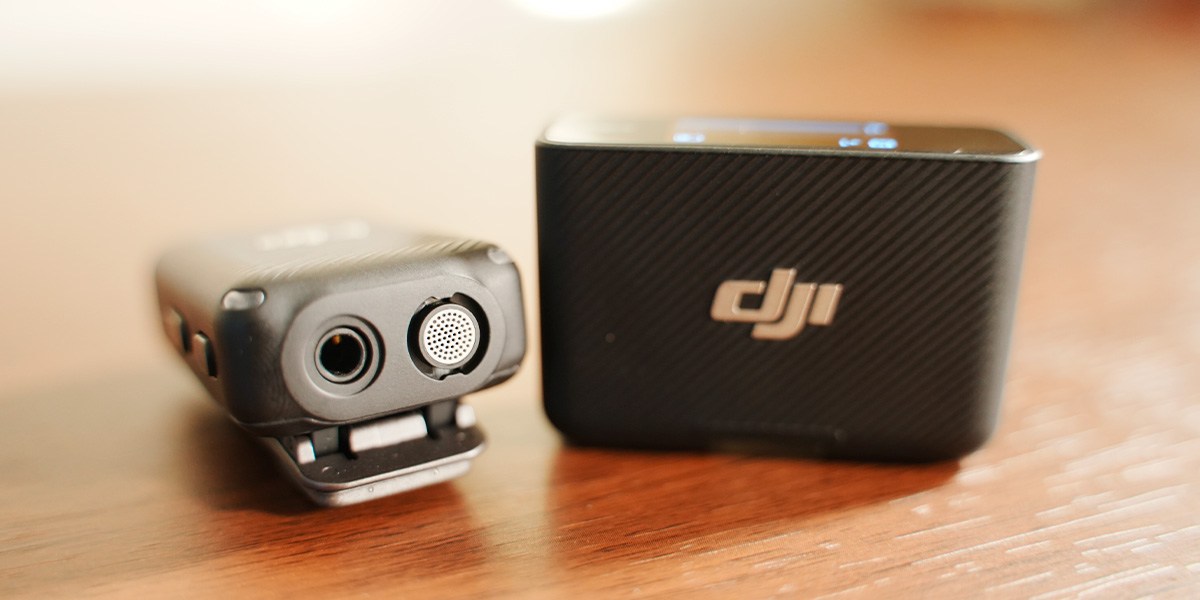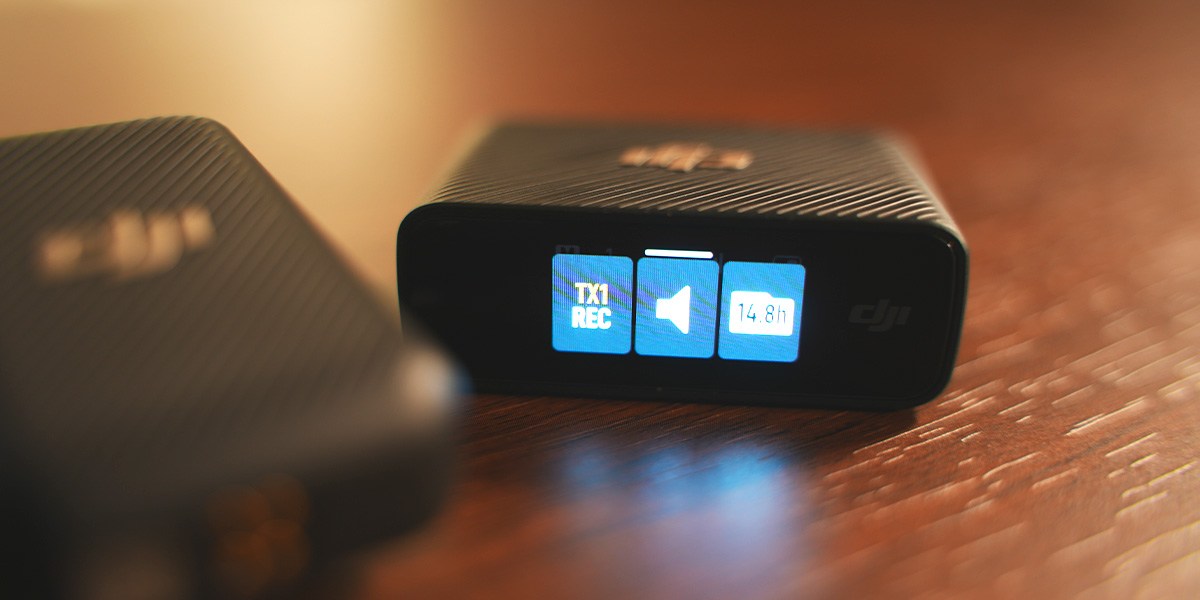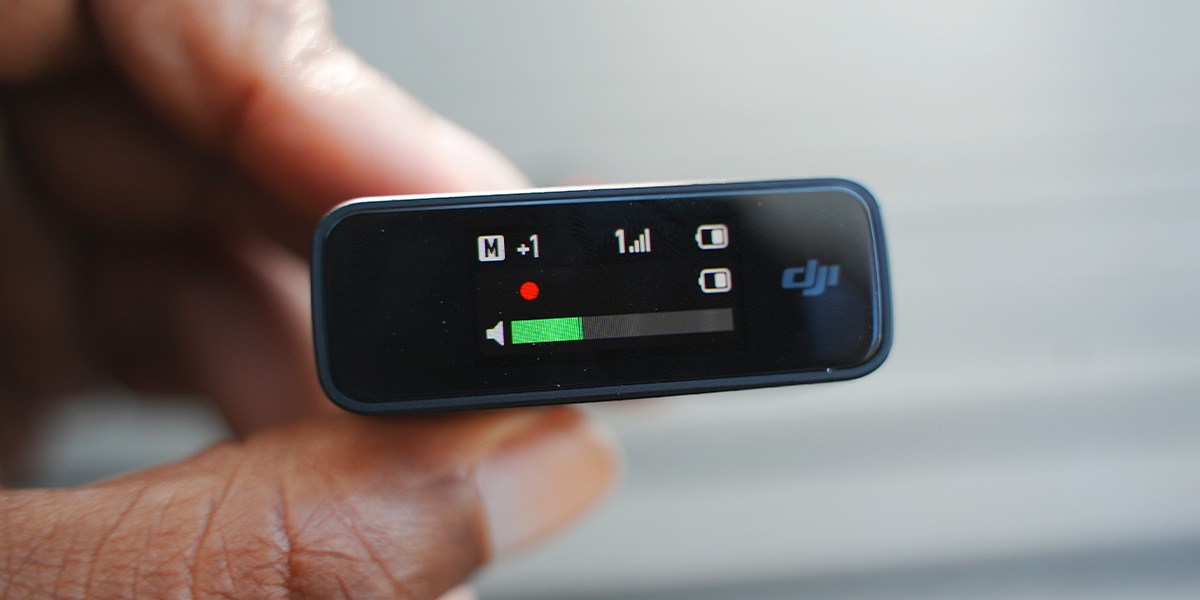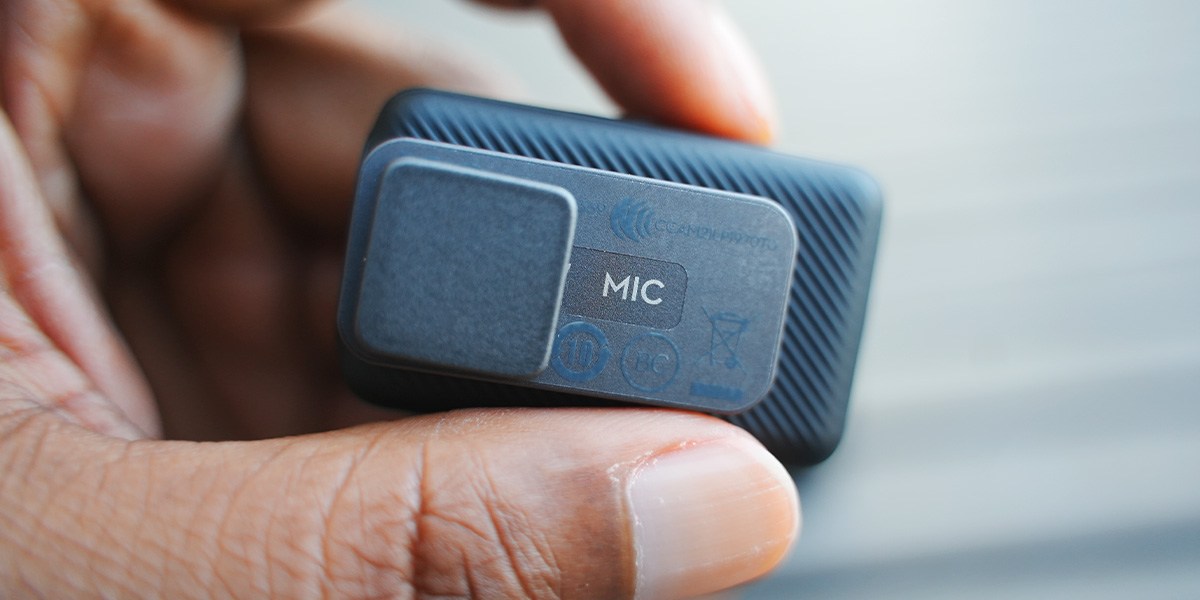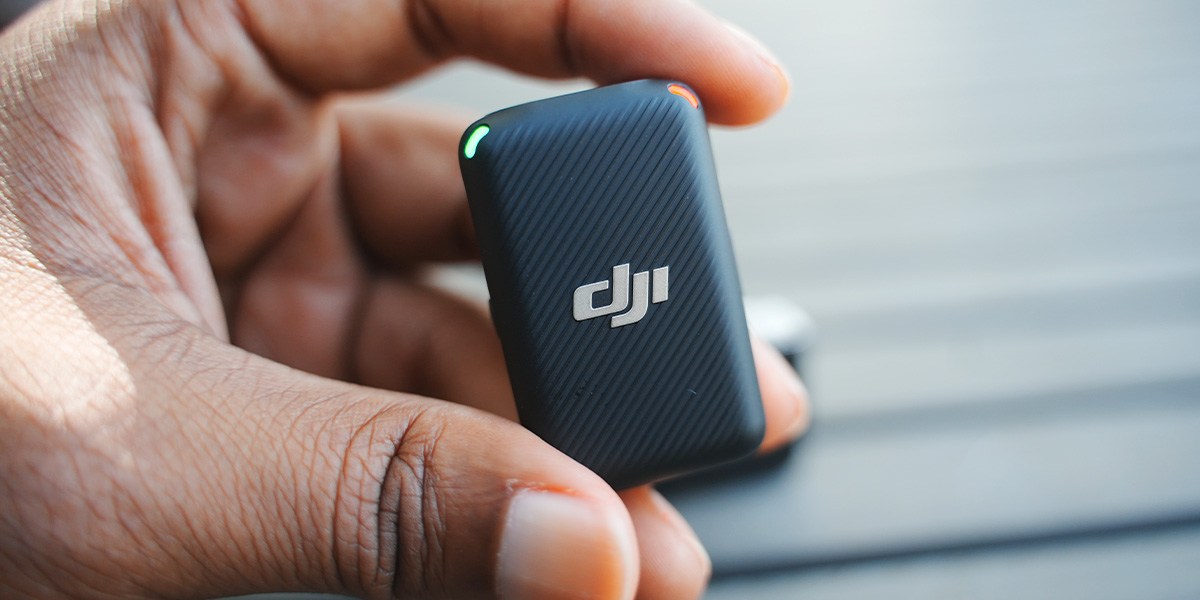DJI
Mic Wireless Lavalier Microphone
About the product
We tested the DJI Mic to see if it's worth it
Premium drone maker DJI shocked the creator world when it announced the launch of the DJI Mic in 2022. Boasting a user-friendly design and potent recording capabilities, it's a wireless microphone system that has garnered attention for upholding DJI's quality reputation and offering impressive sound for content creators.
The BestReviews Testing Lab put the DJI Mic through a series of rigorous tests, both indoors and out, to see how well it handled real-world recording scenarios. We found that its superior sound quality, intuitive OLED touchscreen and convenient charging case make it an exceptional microphone system for those who require the very best.
What is the DJI Mic?
Product specifications
Polar Pattern: Omnidirectional | Frequency Response: Wide | Connector: TRS cables, USB-C | Dimensions: 1.2” W x 0.78” D x 1.86” H (transmitters) and 1.27” W x 0.68” D x 1.87” H (receiver) | Weight: 1 oz (transmitters) and 0.88 oz (receiver) | Material: High-quality plastic | Accessories: TRS cable, Type-C adapter, lightning adapter, 2 windscreens, 2 clip magnets, hot shoe adapter, splitter charging cable and storage bag
The DJI Mic is a portable and user-friendly wireless microphone system designed for content creators of all levels. It stands out for its great audio performance, a convenient carrying case that doubles as a charger (if you purchase the kit that comes with two transmitters), modular connectivity options and a high-quality build with an intuitive touch-based user interface.
During testing, we found that its advertised battery life of five and a half hours was accurate, and it took us a little over an hour to completely charge the transmitters and receiver. Highly sensitive, it easily picked up our voice in various settings, so we never had to worry that we were speaking too softly for it.
Pros
- Great audio quality
- Impressive and attractive design
- Intuitive touchscreen offers access to advanced features
- Charging case offers convenient transport
Cons
- On the pricey side
- Can be tricky to change settings and connectors
Testing the DJI Mic
To test the DJI Mic, we used it as an average content creator would in both indoor and outdoor settings. Indoors, we recorded the microphone near a powered-on computer to test its sensitivity and whether it can reliably minimize noise from whirring fans. Outdoors, we tested the microphone near an active pool situated about 100 yards from a state freeway to judge its capacity to cancel out unwanted noise in busier environments.
To conduct the tests, we spoke into the mic from various positions using three test phrases to judge its ability to accurately reproduce voices and minimize essing and pops from our tongues and lips. We used it interview-style and clipped it onto a shirt to test its polar pickup pattern. We also conducted the two-minute recording test at range to see whether it suffered from connectivity issues when the transmitter and receiver were farther apart.
Additionally, we tested more unique features of the DJI Mic, such as built-in recording and the high-pass filter.
DJI Mic price and where to buy
The DJI Mic is available for $249 at Amazon.
Setup and ease of use
Setting up the DJI Mic was straightforward and painless. Like many mics, the transmitter and receiver come paired right out of the box. All we needed to do was power both on, and they immediately established a link. From there, it was as simple as plugging the receiver into our recording device and speaking into the transmitter.
We found the DJI Mic very intuitive and easy to use, mostly owed to its nearly 1-inch OLED touchscreen. The display allows you to navigate and change various software features, many of which you won't find on competing wireless microphone systems. It only took a few taps and swipes to access any given setting we needed to access, which was incredibly convenient.
While the experience was enjoyable, there's a slight learning curve to memorizing the menu layout. We also found its inability to navigate the menus using physical buttons problematic (there are physical buttons onboard, but they're exclusively for volume adjustments). This design decision contributes to the device's overall sleekness but might make it difficult to make quick changes in certain scenarios, especially if you're forced to wear gloves.
DJI includes modular, cable-free connectors in the box that allow you to connect the receiver directly to smartphones. You get one connector each for USB-C and Lightning-based smartphones (such as iPhones). We love the idea, but it can be frustrating to use in practice. The connector won't work with bulky smartphone cases, and it can be difficult to connect and remove the modular piece (though this contributes to the snug, secure fit needed to ensure reliable recording and proper protection of the receiver).
Charging case and battery life
We received the single transmitter kit for testing, which did not include a charging case. The DJI Mic is rated to last up to five and a half hours, and those claims held up in our testing. It also takes just over an hour to charge both the transmitter and receiver to full, which is impressive. With the charging case (designed to hold two transmitters and one receiver), you can add about 10 hours to your total run time.
Sound quality
The DJI Mic produced some of the best audio of all the microphones we test. The transmitters offer a wide frequency range that can accurately reproduce a variety of voices, from bright to bassy. The omnidirectional microphone is very sensitive but hyperfocused on sounds in close proximity to allow a clear separation between subject and background noise (making the latter easier to tune out with advanced post-process editing).
Audio quality didn't diminish much from one position to another. You can easily record voices on opposite ends of the microphone with enough clarity to hear both subjects with ease. This makes it great for minimizing movement and producing consistent audio levels in interview-style recordings where the host is moving the microphone back and forth between their mouth and the subject's.
Settings and accessories
The DJI Mic comes with an intuitive OLED touchscreen for adjusting settings. You can use it to enable on-device recording, switch between mono and stereo recording modes with dual-channel recording, enable a high-pass filter and make advanced gain adjustments as well as display and LED brightness adjustments and more.
The single transmitter kit includes a high-quality zipper pouch that holds the transmitter, receiver and included accessories, which include USB-C and Lightning adapters for the receiver, a magnetic clip, a TRS cable, a USB-C cable, a camera hot-shoe adapter and a windscreen. Sadly, though the DJI Mic supports lavalier microphones, you don't get one in the box.
DJI Mic vs. other mics
When compared to most other wireless microphones, the DJI Mic offers better noise cancellation and a more user-friendly design. It even excels against comparably priced systems. Especially knowing how costly DJI's drones are, you'd expect a wider price gap for the gulf between features, sound performance and build quality compared to competing microphones, but this system is very reasonably priced for all you're getting.
For instance, against the de facto categorical benchmark known as the Rode Wireless Go II, the DJI Mic bests it in almost every area. It offers better sound, more onboard recording storage (with standalone transmitter recording for backups), a longer recording range, a more intuitive user interface, greater versatility and a much sleeker design. The full two-transmitter DJI Mic kit costs about $90 more than Rode's, but the value handily exceeds the premium.
Product benefits
The DJI Mic is one of the most intuitive, smartly designed wireless microphone systems ever built. We didn't expect it to perform so admirably against the competition at its core function (recording audio) considering DJI's relative inexperience in the space.
The company benefited from its late-market arrival by building on tried-and-true examples from industry juggernauts like Rode. DJI turns mobile, wireless recording up to 11 in almost all areas, from sound quality to hardware design and features. Though we didn't use it, the charging case alone is a major reason to consider buying the DJI Mic, as it makes it much easier to safely transport and charge your equipment on the go so it’s ready when you need it.
Product drawbacks
While we love the sound coming out of the DJI Mic, it isn't far and away better than competing systems that cost less. You're paying more for the convenience and intuitiveness of the DJI system.
The Hollyland Lark M1, for example, offers a similar charging case and aggressive noise cancellation for about $200 less than the DJI Mic at just $130 (though its transmitters lack 3.5-millimeter inputs and deep audio customization, and audio can sound unimpactful when canceling excess noise).
While the DJI Mic’s built-in high-pass filter gives it excellent noise-canceling properties, it doesn’t aim to totally eliminate background noise like the Hollyland Lark M1 (but that’s not always a bad thing, depending on your needs). It's also unfortunate that there were no lavalier microphones included to help justify its high cost.
Should you get the DJI Mic?
Quality content creation doesn't require a lofty wireless microphone system like the DJI Mic. You can get good-enough audio performance for less money elsewhere. We'd liken it to an exotic sports car: the Kia can get you from point A to point B all the same, but it doesn't quite compare to the experience of driving a Ferrari.
The DJI Mic's high cost isn't all poured into superficial additions, however. Options like built-in and adjustable high-pass filters, magnetic shirt clips and modular cable-free smartphone connectors add adaptability and versatility that you don't find in most other products.
Whereas other systems are better suited for specific recording environments, the DJI Mic can excel in a variety of situations. The charging case is alluring, too, but alone isn't reason enough to buy one (you can get a similar charging experience with products that cost much less).
If you're someone who requires the best gear money can buy, you should buy the DJI Mic. If you'd rather save some cash, there are suitable alternatives that offer decent audio quality in a more ordinary package.


